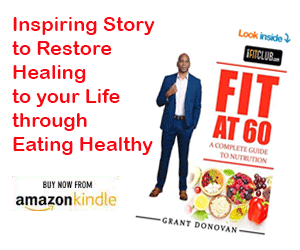
Kettlebell Deadlifts Ultimate Guide to Strength Form and Power

Lower Body HIIT Workout Burn Fat and Build Strength Fast

Dumbbell Bent Over Row Ultimate Guide to a Stronger Back

Weightlifting Workout Routines To Build Strength and Muscle
How To Get More Vitamin D An Essential Guide

Vitamin D, also known as the “sunshine vitamin,” is an essential nutrient that plays a critical role in our overall health. Vitamin D helps to regulate the calcium and phosphate in our bodies, which are necessary for bone and teeth health. Besides, it supports our immune system, brain, and nervous system health. Not getting enough VD can lead to bone abnormalities such as osteomalacia (soft bones) or osteoporosis (fragile bones). In this blog post, we will delve into ways to increase your intake of this crucial vitamin.
How To Get More Vitamin D An Essential Guide
Sun Exposure The Natural Route For More Vitamin D
The most abundant natural source of Vitamin D is sunlight. Our skin is designed to produce this nutrient when exposed to the sun’s UVB rays. However, the effectiveness of this method can be influenced by several factors, including geographic location, season, time of day, skin type, age, and even sunscreen use. Here’s how to optimize your sun exposure for VD production:
Timing: Aim for midday sun exposure, when the sun is at its highest point. This is when UVB rays are the most intense and can stimulate the production of VD most efficiently.
Frequency: The Skin Cancer Foundation suggests that about 15 minutes of face, hands, and arms exposure to the sun twice a week is adequate for vitamin D synthesis. However, this can vary based on your skin type and location.
Sunscreen: While it’s essential to protect your skin from sun damage, most sunscreens block UVB rays and thus prevent VD production. You should strike a balance between avoiding harmful sunburn and getting enough sunlight for vitamin D.
However, remember that excessive sun exposure increases the risk of skin cancer. Always consult your doctor for personalized advice.
Dietary Intake – Harness The Power of Food
Vitamin D is present in various food sources, though not as many as other vitamins. Here are some of the foods that are rich in VD:
- Fatty Fish: Fish such as salmon, mackerel, and sardines are excellent sources of VD.
- Egg Yolks: The yolk of an egg contains Vitamin D, so consuming whole eggs instead of just the whites can help increase your intake.
- Fortified Foods: Many types of milk, orange juice, cereal, and yogurt are fortified with VD.
- Beef Liver: While it’s not the most common food item for many, it is a rich source of VD.
- Cheese: Certain types of cheese like Swiss and Cheddar contain small amounts of Vitamin D.
Vitamin D Supplements – A Reliable Alternative
For those who live in locations with limited sunlight, have dietary restrictions, or simply cannot get enough Vitamin D through sun exposure or food, supplements can be a viable alternative. Vitamin D supplements are available over-the-counter in most pharmacies and can help fill the gap in your nutritional needs.
It’s important to remember that while supplements can be beneficial, they should not replace a varied, balanced diet. Always consult your healthcare provider before starting a new supplement regimen, as excessive vitamin D can lead to health complications, including hypercalcemia (a condition caused by too much calcium in your blood).
Regular Testing – Know Your Levels
If you’re concerned about your VD levels, consider getting them tested. This can be done through a simple blood test ordered by your healthcare provider. Regular testing is especially important for those at high risk of deficiency, including older adults, breastfed infants, people with darker skin, those with certain medical conditions such as Crohn’s disease or celiac disease, and people who have limited exposure to sunlight.
Maintaining Good Health
Vitamin D is essential for maintaining good health, yet many of us might not be getting the required amounts. Fortunately, through a combination of sunlight exposure, eating Vitamin D-rich foods, taking supplements if necessary, and regular testing, it’s possible to maintain adequate levels of this important vitamin.
Remember, everybody’s needs are different. The optimal intake of VD depends on individual factors such as age, skin type, geographical location, and dietary habits. Always consult with a healthcare professional for advice tailored to your specific circumstances.
By prioritizing Vitamin D in your health routine, you’re taking a significant step toward better overall health. Here’s to stronger bones, a robust immune system, and healthier days ahead!
Most Recommended
Subscribe to our Newsletter
Stay up to date on the latest men’s health, fitness and lifestyle trends and tips.
About Us
Men’s Fit Club was started with the goal of empowering men to get the most out of their lives. This meant going beyond exercise and diet tips to really address the broad range of issues that men face on a daily basis – topics like recreation, finding love, sexual health and even sound fashion advice.
Quick Links
© COPYRIGHT MEN'S FIT CLUB 2025. All Rights Reserved

